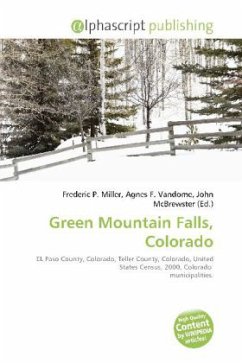
Mountain Time Zone
Versandkostenfrei!
Versandfertig in 6-10 Tagen
23,99 €
inkl. MwSt.

PAYBACK Punkte
12 °P sammeln!
High Quality Content by WIKIPEDIA articles! The Mountain Time Zone of North America keeps time by subtracting seven hours from Coordinated Universal Time, sometimes called Greenwich Mean Time (UTC 7) during the shortest days of autumn and winter, and by subtracting six hours during daylight saving time in the spring, summer, and early autumn (UTC 6). The clock time in this zone is based on the mean solar time of the 105th meridian west of the Greenwich Observatory. In the United States and Canada, this time zone is generically called Mountain Time (MT). Specifically, it is Mountain Standard Ti...
High Quality Content by WIKIPEDIA articles! The Mountain Time Zone of North America keeps time by subtracting seven hours from Coordinated Universal Time, sometimes called Greenwich Mean Time (UTC 7) during the shortest days of autumn and winter, and by subtracting six hours during daylight saving time in the spring, summer, and early autumn (UTC 6). The clock time in this zone is based on the mean solar time of the 105th meridian west of the Greenwich Observatory. In the United States and Canada, this time zone is generically called Mountain Time (MT). Specifically, it is Mountain Standard Time (MST) when observing standard time (Winter), and Mountain Daylight Time (MDT) when observing daylight saving time. In Mexico this time is known as the Pacific Zone. In the USA, the exact specification for the location of time zones and the dividing line between zones is set forth in the Code of Federal Regulations at 49 CFR 71. The zone is one hour ahead of the Pacific Time Zone and one hour behind the Central Time Zone. In some areas, starting in 2007, the local time changes from MST to MDT at 02:00 LST to 03:00 LDT on the second Sunday in March and returns at 02:00 LDT to 01:00 LST on the first Sunday in November.












